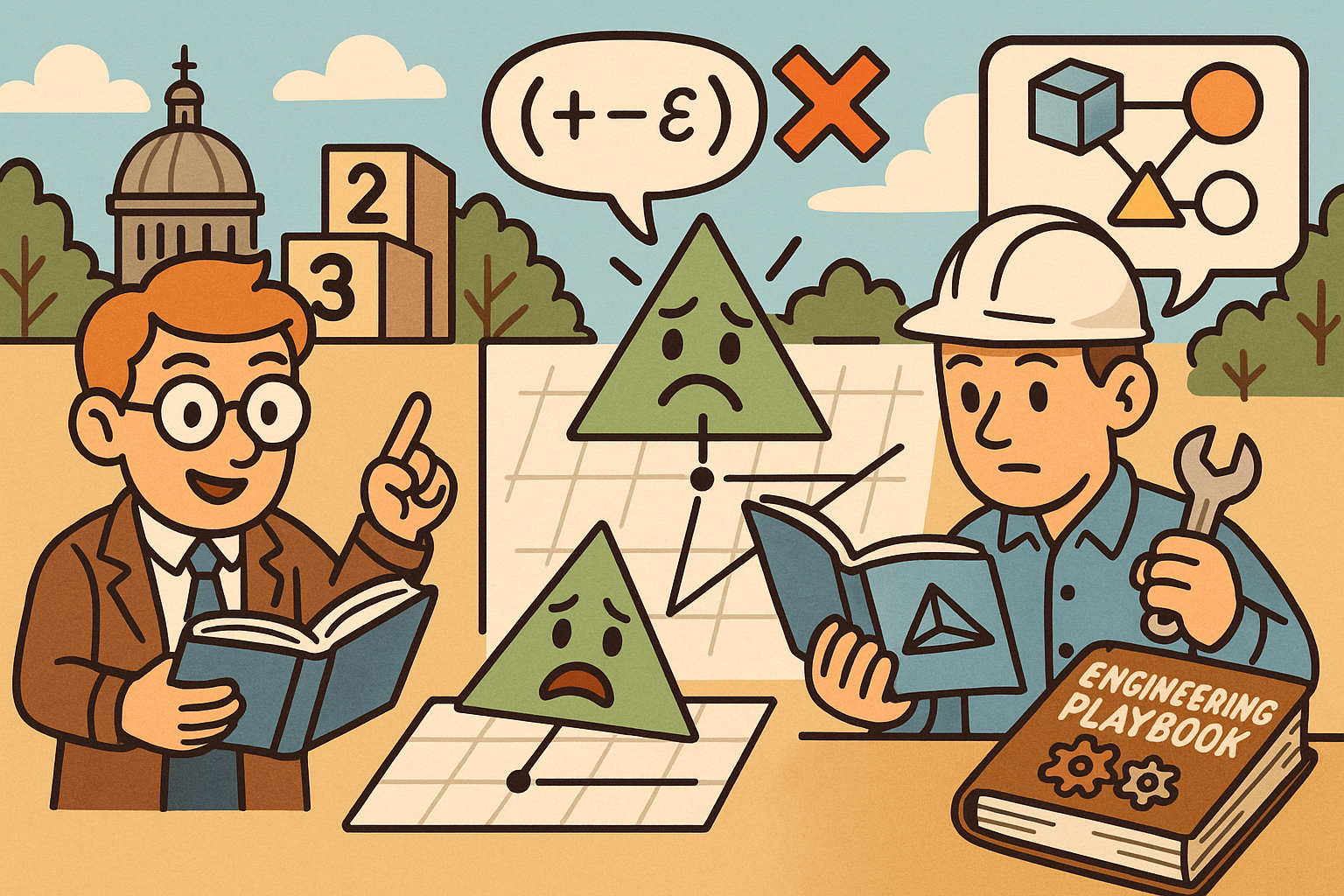Your Cart is Empty
Customer Testimonials
-
"Great customer service. The folks at Novedge were super helpful in navigating a somewhat complicated order including software upgrades and serial numbers in various stages of inactivity. They were friendly and helpful throughout the process.."
Ruben Ruckmark
"Quick & very helpful. We have been using Novedge for years and are very happy with their quick service when we need to make a purchase and excellent support resolving any issues."
Will Woodson
"Scott is the best. He reminds me about subscriptions dates, guides me in the correct direction for updates. He always responds promptly to me. He is literally the reason I continue to work with Novedge and will do so in the future."
Edward Mchugh
"Calvin Lok is “the man”. After my purchase of Sketchup 2021, he called me and provided step-by-step instructions to ease me through difficulties I was having with the setup of my new software."
Mike Borzage
Design Software History: Blender's Evolution: From Open-Source Experiment to Professional Design Powerhouse
August 03, 2025 8 min read


Blender’s Origins and Early Development Overview
Blender began its journey as a revolutionary open-source project developed with a spirit of innovation and community empowerment. Conceived in the mid-1990s by visionary software developers, Blender set out to challenge the norms of proprietary design solutions by offering a free, fully functional 3D creation suite. The project was originally born out of the need to democratize access to advanced design tools which until then had been the exclusive domain of high-budget studios. In its early development, Blender was characterized by a relentless drive to deliver a comprehensive toolset for modeling, animation, and rendering, laying the groundwork for a future filled with rapid evolution and diverse applications. Engaging a passionate community, Blender quickly attracted attention from developers and artists alike who were eager to contribute their skills to an ambitious project.
Early Development Milestones and Community Involvement
At the heart of Blender’s origins was a series of key milestones that not only defined its technical prowess but also forged the very identity of its burgeoning community. The project’s inception was marked by a sequence of version releases, each contributing fundamental enhancements to the core functionality and usability of the toolset. Early version releases introduced many of the core features that remain central to Blender’s operation today. Contributors—ranging from independent developers to dedicated enthusiasts—provided invaluable input which resulted in continuous rollback of technical debt and sparkled the imagination of the design community. The involvement of pioneering figures such as Ton Roosendaal and early organizational support from institutes committed to open-source innovation played an essential role in shaping Blender’s future. The project incorporated feedback loops, rigorous testing, and a collaborative development ethos that fostered a sense of joint ownership over its progress. This solid foundation allowed Blender to patiently build a resilient and dynamic development environment, a characteristic reflected in its agile response to evolving design demands. Additionally, the adoption of community-driven development practices ensured that each release was carefully curated through collective wisdom and iterative improvement.
- The early release versions showcased rapid development and robust problem-solving.
- Key figures such as Ton Roosendaal laid essential philosophical and technical foundations.
- A network of dedicated developers contributed to a supportive and innovative community.
- Blender’s commitment to free and open-source philosophies set it apart from competitors.
The Transition to Professional Design Studios
Blender’s transformation from a hobbyist tool to a trusted professional solution is one of the most compelling narratives in modern design software history. Initially embraced by a niche audience of enthusiasts, Blender evolved its feature set and stability to cater to the rigorous demands of professional studios. This steady evolution was driven by both community contributions and market pressures which warranted the refinement of its rendering engines, simulation tools, and overall performance. As Blender grew in prominence, it began to attract the attention of established design studios and individual professionals who recognized its potential for high-end production workflows. The software’s ability to deliver powerful 3D modeling, precise animation capabilities, and realistic rendering in multiple project contexts, including design, animation, and visual effects, resonated with professionals who were seeking versatile alternatives to expensive proprietary software. During this transition period, Blender continuously addressed and overcame significant challenges—from compatibility issues and interface redesigns to performance optimization and integration with existing pipelines—ensuring that it was well-equipped to handle the diverse tasks demanded by professional production environments. The transition was characterized by methodical improvements, strategic enhancements in core functionalities, and an unwavering focus on meeting the evolving requirements of industry users.
Challenges Overcome and Evolution of Professional Capabilities
The evolution of Blender into an industry-grade solution was marked by a series of strategic improvements that addressed critical challenges faced in early adoption contexts. Developers and community leaders collaborated to fine-tune the software’s stability and performance, ensuring that it could withstand the complex workflows demanded by professional users. The software’s iterative process of refinement led to major overhauls in its user interface and the integration of cutting-edge features such as advanced simulation and real-time rendering tools. Overcoming technical hurdles such as compatibility with diverse file formats and cross-platform stability, Blender gradually gained the trust of professionals in sectors including digital design, animation, and visual effects. Approaches such as robust testing protocols, community feedback sessions, and the incorporation of specialized plug-ins further reinforced Blender’s capabilities. Professionals began to appreciate not only its extensive toolset but also the flexibility to customize the software to suit their unique production requirements. Through constant evolution, the software transitioned from a community experiment into a reliable and adaptable solution, setting new standards within the domain of professional design studios. This remarkable transformation was underscored by a series of deliberate improvements that culminated in a platform capable of meeting the adversities of high-stakes design projects on a global scale.
- Incremental feature enhancements refined Blender’s professional utility.
- Enhanced stability and performance addressed industry-specific challenges.
- Developer collaboration ensured rapid resolution of compatibility issues.
- Robust testing and iterative feedback built confidence among studio professionals.
Technological Innovations and Capabilities
Blender’s long-standing commitment to innovation is intricately tied to its open-source model, which has served as the perfect incubator for significant technological breakthroughs. By making its source code freely available, Blender fostered an ecosystem where contributors worldwide could experiment with and enhance the software’s functionality. This collaborative environment was particularly evident in the development of breakthrough features such as advanced sculpting tools, physically-based rendering engines, and an array of simulation tools that have greatly influenced the way digital content is created. A close examination of these technological innovations reveals that Blender not only keeps pace with, but at times outstrips, proprietary design software trends. One of its standout features is the Cycles rendering engine, which leverages GPU acceleration to offer photorealistic rendering capabilities that rival industry standards. Moreover, Blender’s dynamic interface for modeling, sculpting, and texturing has been continuously refined to enhance artist productivity and design precision. Its simulation framework includes comprehensive tools for fluids, cloth, and particle simulations, which are essential for creating realistic animations and effects. The integration of these tools into a unified, coherent platform has significantly elevated Blender’s position within the professional community, helping it bridge the gap between hobbyist experimentation and industrial-grade design execution.
Breakthrough Features and Comparative Analysis
In the realm of feature innovations, Blender has consistently outperformed traditional paradigms by incorporating timely improvements and novel workflows in its design architecture. The integration of sculpting, rendering, simulation, and modeling functionalities has allowed artists to work fluidly within a single environment rather than juggling multiple isolated applications. Key breakthroughs such as its node-based material system, comprehensive physics simulations, and an intuitive sculpting mode have set it apart from many proprietary applications. While proprietary design software often focuses on closed systems with limited customization, Blender’s open-source ethos has enabled it to evolve rapidly through community experimentation and frequent updates. Industrial trends indicate a clear preference for software that combines power, flexibility, and cost effectiveness; Blender’s continuous integration of breakthrough technologies has positioned it as a compelling alternative for professionals around the globe. Technological innovations in Blender have not only leveled the playing field for small studios and individual designers but have also introduced critical advancements that have influenced the broader software development landscape. The progression of Blender’s capabilities has been marked by a series of iterative releases and experimental plug-ins that contributed to its formidable reputation. Structural comparisons with traditional, proprietary counterparts reveal that Blender has maintained a competitive advantage through the timely adoption of new computing methodologies, enhanced user experience paradigms, and a relentless drive to democratize professional-grade design solutions.
- Cycles rendering engine offers photorealistic outputs and GPU acceleration.
- Dynamic integration of advanced sculpting and simulation tools.
- Node-based workflow enables detailed material and texture creation.
- Open-source development fuels rapid innovation and continuous improvement.
Industry Impact and Community-Driven Growth
Blender’s ascent to a professional powerhouse in design software is inseparable from its strong, community-driven foundation. The widespread adoption of Blender in global design and production pipelines is a testament to its robust functionality and the vibrant ecosystem that continually supports and enhances its utility. In a field traditionally dominated by expensive, proprietary solutions, Blender’s model of collective validation—backed by a network of developers, studios, and educational institutions—has carved out a niche based on reliability, flexibility, and creative freedom. The influence of Blender extends far beyond its software capabilities; it has inspired a cultural shift by demonstrating that powerful design solutions can be accessible and collaboratively evolved. The design community, trust in its open-source philosophy, and the iterative contributions from a diverse array of professionals have continuously refined Blender, ensuring that it meets the high standards required by modern digital creators. This symbiotic relationship between the software and its community has led to a series of co-designed features and enhancements that have directly impacted the production quality in global industries such as film, animation, and game development. Furthermore, the continuous influx of contributions from academic institutions and independent research groups has propelled Blender to the forefront of design innovation, illuminating the path for future enhancements and cross-disciplinary collaborations.
Collaborative Ecosystem and Global Influence
The secret behind Blender’s enduring success lies not only in its technical merits but also in the palpable impact of its community-driven approach. The relationship between Blender’s developers and its user community is characterized by robust engagement, frequent knowledge-sharing sessions, and collaborative decision-making. Workshops, online forums, and educational initiatives have all played a part in ensuring that Blender remains relevant and responsive to the practical needs of industry professionals. In many respects, the global network of Blender users has fostered a unique ecosystem where innovation is both collective and iterative. As a result, the software has often been at the vanguard of adopting new digital methodologies, frequently integrating cutting-edge technologies that help maintain its competitive edge. The collaborative framework has also allowed for the rapid prototyping of enhanced features in response to market needs, a process that traditional proprietary vendors often struggle to emulate. This dynamic has established Blender as more than just a tool; it is a living, evolving platform that continuously adapts to the expanding horizons of digital design. The far-reaching influence of Blender is evident in the way it has inspired and reshaped design pipelines globally, heralding a new era of community-driven innovation and collaborative creativity.
- Frequent community workshops and online forums promote knowledge exchange.
- Collaborations with educational institutions accelerate skill development.
- Global influence is reinforced through iterative, co-designed features.
- Rapid adoption of emerging technologies keeps Blender at the forefront.
Conclusion: Reflecting on the Legacy and Future of Blender
The journey of Blender from an experimental open-source tool to a leading professional design powerhouse is one marked by relentless innovation, community collaboration, and an unwavering commitment to democratizing digital creation. By consistently integrating breakthrough features, refining its usability, and evolving its robust ecosystem, Blender has not only revolutionized the digital design industry but also set new standards for how software can be developed and maintained. The key milestones in Blender’s evolution—characterized by iterative improvements, strategic overcoming of technical challenges, and an enduring spirit of community-driven growth—illustrate how a platform, fueled by the principles of transparency and collaboration, can dramatically alter the landscape of professional design studios. Today, Blender stands as a testament to the transformative power of open-source software, delivering advanced tools for sculpting, rendering, and simulation that rival the best proprietary solutions. Looking ahead, the future prospects of Blender remain bright as emerging technological trends and ever-deepening community contributions promise to propel the software into new realms of capability and influence.
Legacy, Innovation, and Future Prospects
In reflecting on Blender’s legacy and its future trajectory, it is crucial to recognize the interplay between technological innovation and community engagement that has defined its evolution. The software’s rapid pace of development is not merely a consequence of its technical design but also a result of the collective enthusiasm and expertise of a worldwide network of contributors. Future prospects for Blender include further exploration into real-time rendering, virtual reality, and other emerging fields, all of which will continue to expand the horizons for professional designers. The sustained momentum of Blender will be maintained through the symbiotic relationships that have matured over time between studios, independent developers, and academic institutions. In a digital age where collaboration and adaptability are paramount, Blender’s journey serves as an inspiring reminder of how open-source models can challenge conventional industry paradigms and continually drive progress. With every new release, Blender reaffirms its dedication to fostering an ecosystem defined by accessibility, inclusivity, and relentless innovation—values that will undoubtedly shape the future of professional design studios and artistic expression on a global stage. As the software evolves, it will continue to influence new generations of designers, ensuring that its legacy is not only preserved but also enhanced by future breakthroughs.
- Ongoing contributions ensure the evolution of groundbreaking features.
- Increased focus on emerging fields like real-time rendering and VR.
- Strong community ties and industry adoption solidify its market position.
- Commitment to open-source values continues to drive innovation forward.
Also in Design News

Design Software History: Numerical Robustness in Geometry Kernels: History, Failure Modes, and Engineering Playbook
December 08, 2025 13 min read
Read More
Cinema 4D Tip: Reusable Cinema 4D Camera Rig Presets for Faster Shot Setup
December 08, 2025 2 min read
Read MoreSubscribe
Sign up to get the latest on sales, new releases and more …



